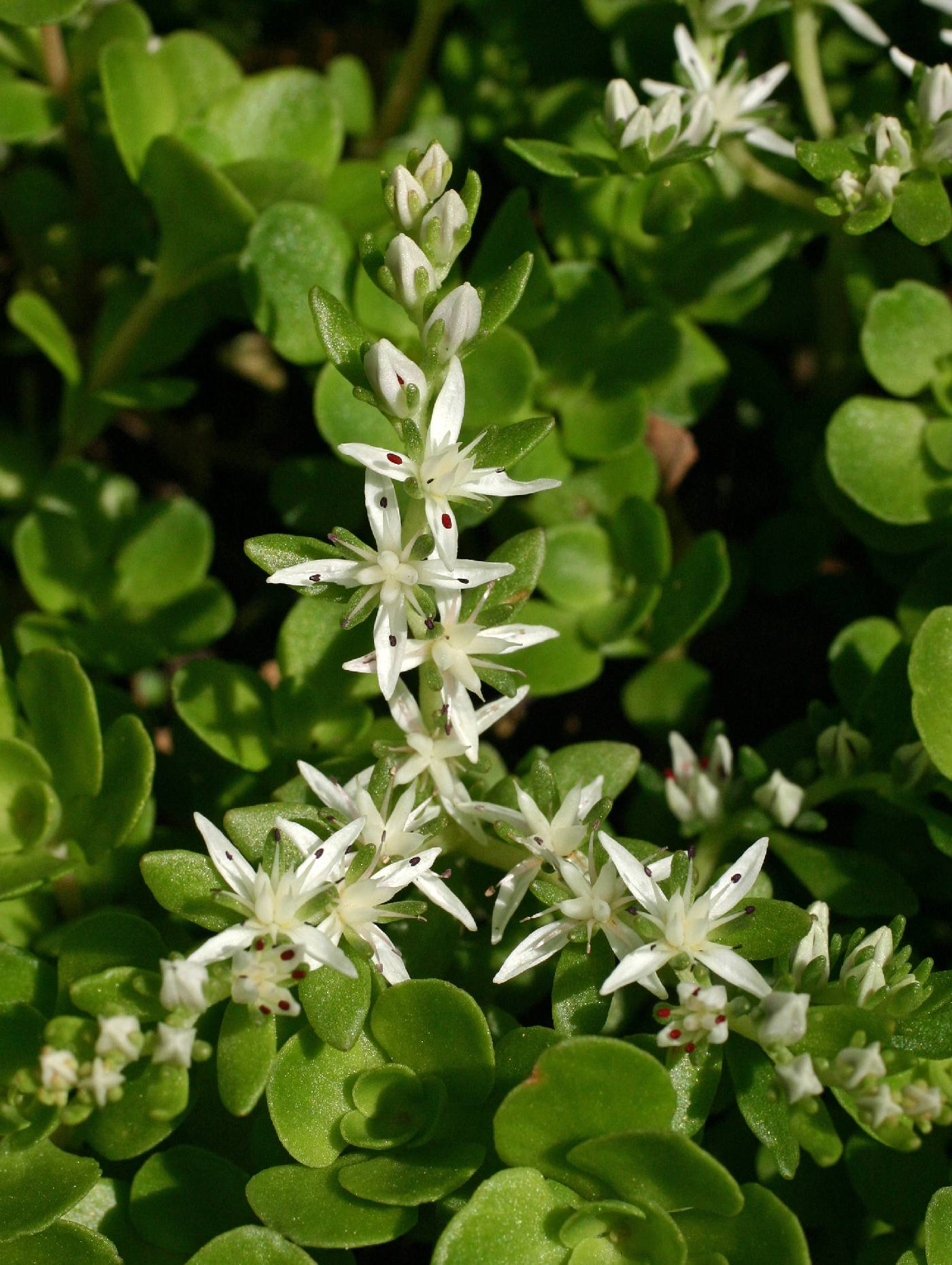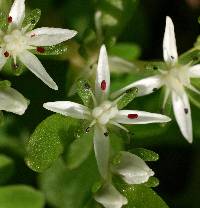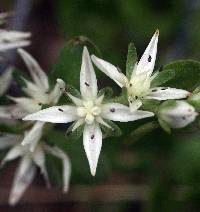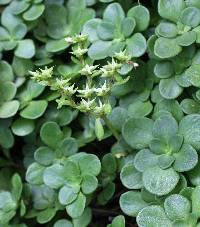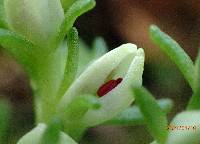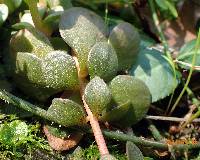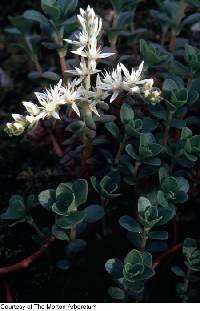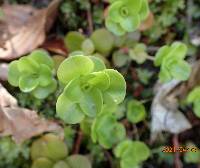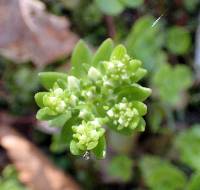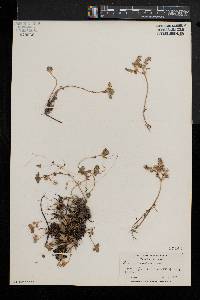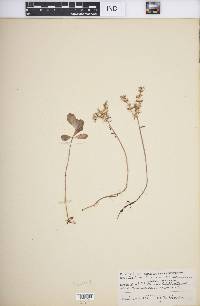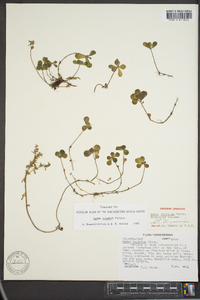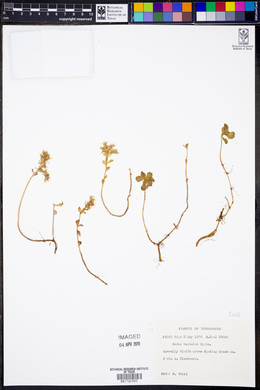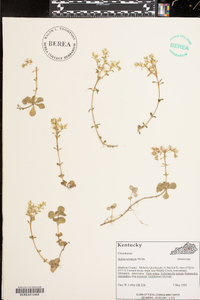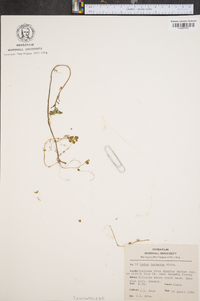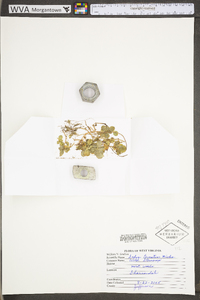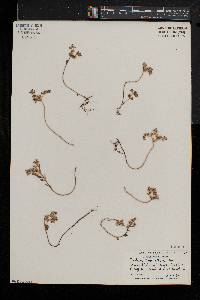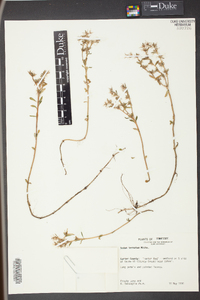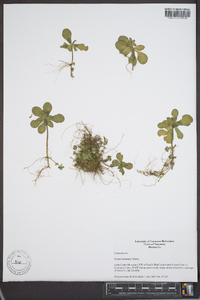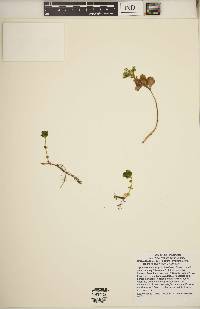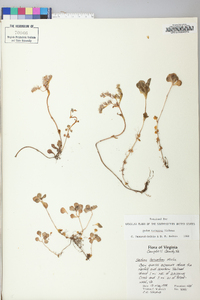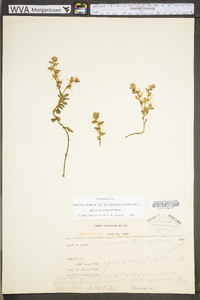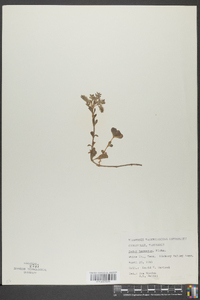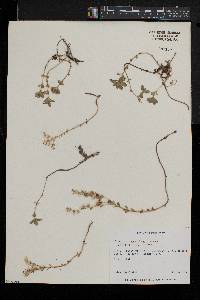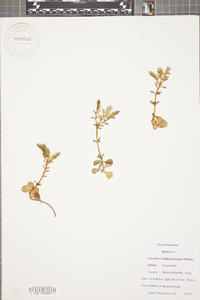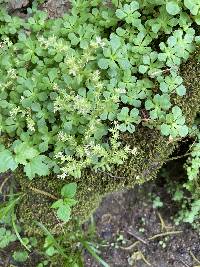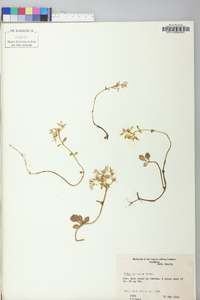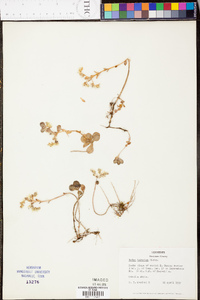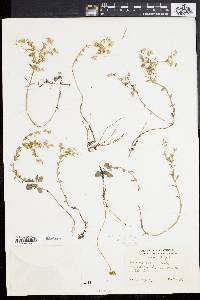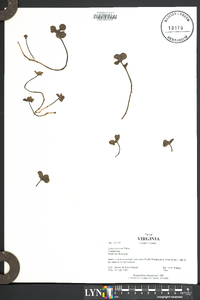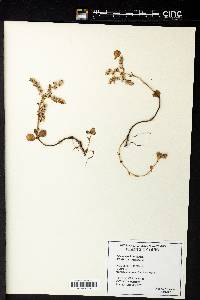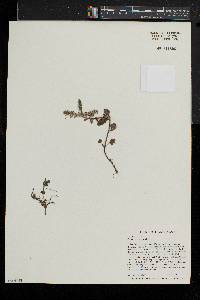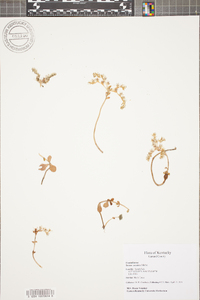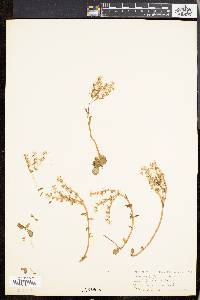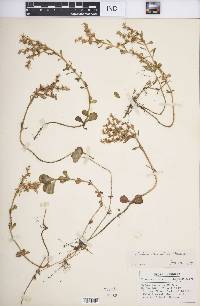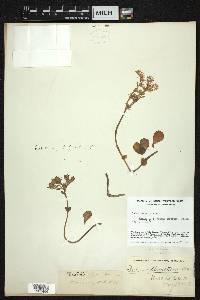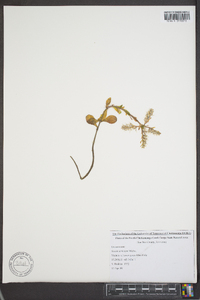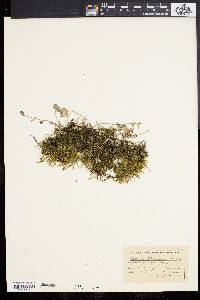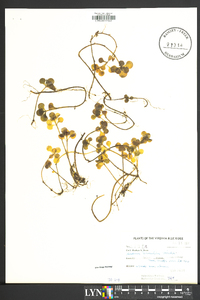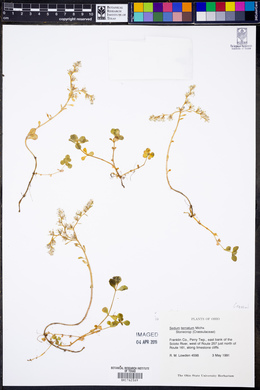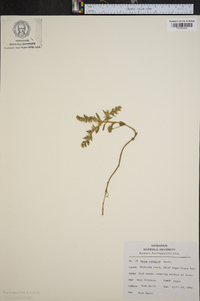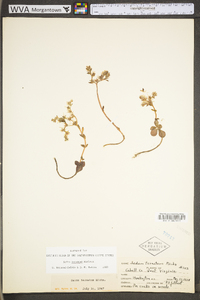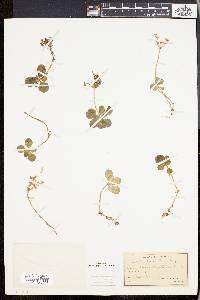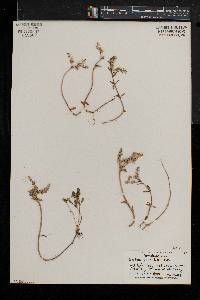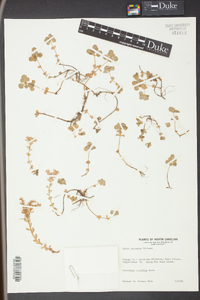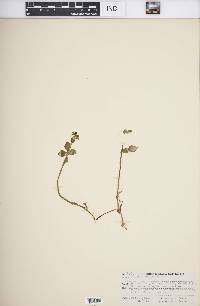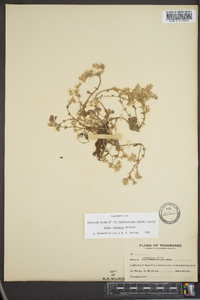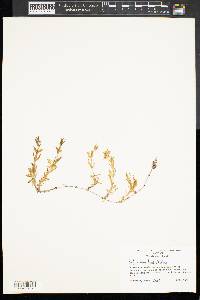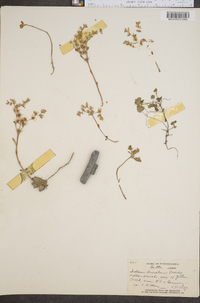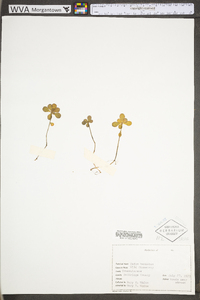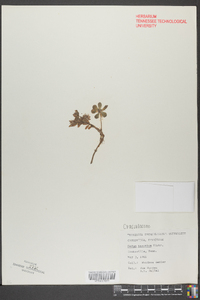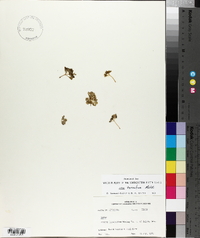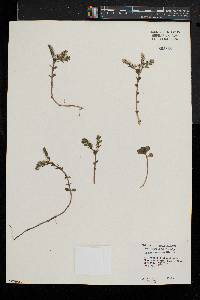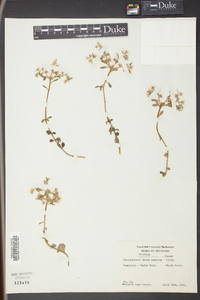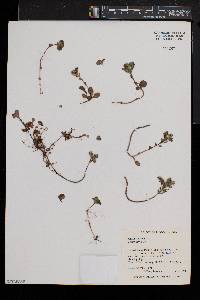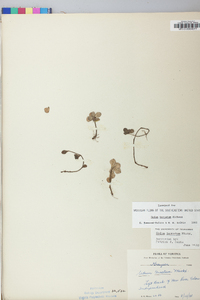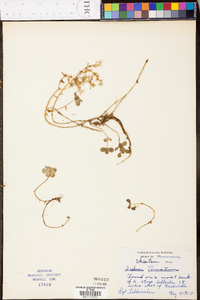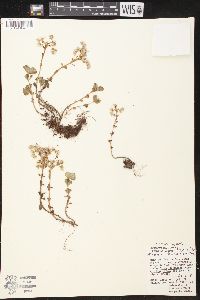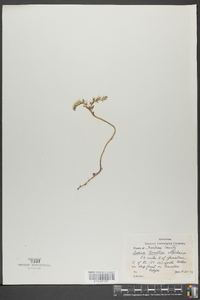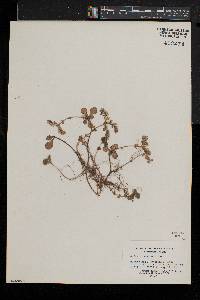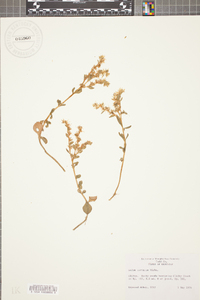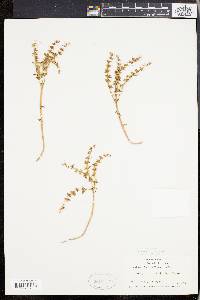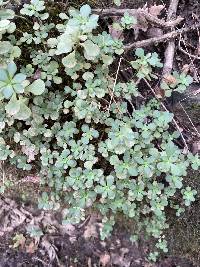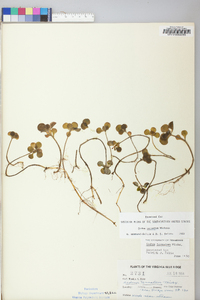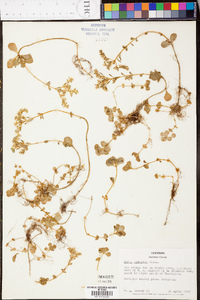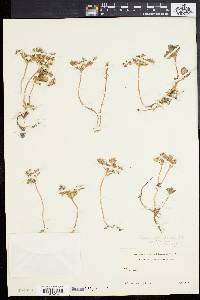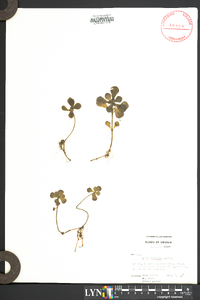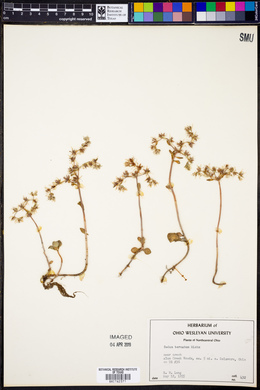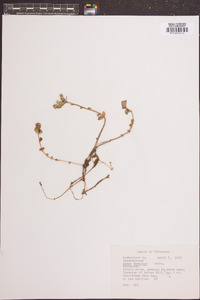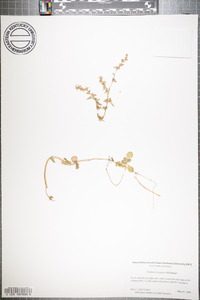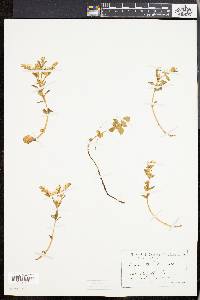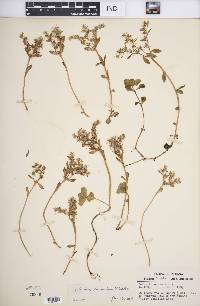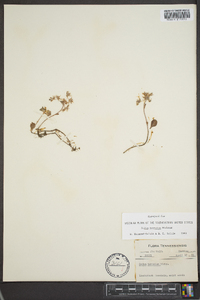Sedum ternatum
|
|
|
|
Family: Crassulaceae
Woodland Stonecrop
|
Herbs, perennial, often mat-forming, glabrous. Stems de-cumbent, few-branched, (finely papillose), bearing terminal rosettes. Leaves in whorls of 3, rarely 2 or 4 or decussate, spreading to ascending, shortly petiolate or sessile; blade pale yellow-green to dark green, not glaucous, obovate to obovate-spatulate or elliptic, laminar, 10-17 × 7-11 mm, base truncately short-spurred, not scarious, apex truncate or rounded, sometimes emarginate, (surfaces finely papillose or crenulate). Flowering shoots erect, simple, 4-20 cm, (papillose); leaf blades obovate to obovate-spatulate or elliptic, base short-spurred; offsets not formed. Inflorescences cymes, 5-25-flowered, 3-branched, (sometimes papillose); branches recurved in bud, becoming ± erect at anthesis, not forked; bracts similar to leaves. Pedicels absent or to 1 mm, (papillose, almost glandular). Flowers 4(-6)-merous; sepals spreading to erect, connate basally, pale yellow-green, lanceolate-oblong or elliptic, equal, 2.4-5 × 0.8-1.7 mm, apex obtuse, (finely papillose); petals erect to spreading, distinct, white, elliptic-lanceolate, abaxially carinate, adaxially channeled, 5.4-8.9 mm, apex acute; filaments white, (flattened basally); anthers red or purple; nectar scales yellow or pale yellow, oblong or subquadrate. Carpels widely divergent in fruit, distinct, brown. 2n = 32. Flowering spring-early summer. Alluvial forests, fertile and mesic upland forests, rocky slopes, bluffs, cliffs, and shaded rock outcrops of sandstone, shale, limestone, quartzite, and other kinds of rocks, usually wooded habitats including stream banks, gullies, rocky slopes, ledges; 50-1700 m; Ont.; Ala., Ark., Conn., Del., D.C., Ga., Ill., Ind., Iowa, Ky., Maine, Md., Mass., Mich., Miss., Mo., N.J., N.Y., N.C., Ohio, Pa., R.I., S.C., Tenn., Vt., Va., W.Va. Sedum ternatum has conspicuous pale-brown lips along the adaxial suture of the mature follicles. The anthers are horseshoe-shaped. It is found in the Appalachian highlands from Georgia to New Jersey, southern and western Pennsylvania, and Ohio; on the interior low plateaus and the central lowland from Ohio to Missouri and Iowa; on the coastal plain in Maryland and Virginia; on the Ozark plateau in Missouri; in the Ouachita Mountains on the eastern slope of Magazine Mountain in Arkansas; and in scattered localities in New England, New York, and southern Michigan. Now known in Ontario only as a garden escape, it may have been native originally in the Niagara area, where it was collected in a natural setting in 1823.
Perennial herb 10 - 20 cm tall Stem: loosely creeping, mat-forming, with short leafy sterile shoots and a few flowering shoots. Leaves: mostly crowded in a rosette near the tip, usually in whorls of three (rarely four), 1 - 2 cm long, about 1 cm wide, inversely egg-shaped with a wedge-shaped base, non-toothed, flat, succulent. The upper leaves of the fertile stems are usually opposite (sometimes alternate), narrow and inversely egg-shaped to nearly linear, while the lower leaves are similar to those of the sterile shoots. Flowers: borne on an inflorescence of two to four divergent clusters (cymes), stalkless with four linear-oblong sepals about 4 mm long and four wide-spreading white petals that are narrow lance-shaped and 5 - 10 mm long. Fruit: a dry follicle. Similar species: Sedum alboroseum, Sedum album, Sedum purpureum, Sedum spurium, and Sedum ternatum have white to pink or purple flowers. Sedum album is easily distinguished by having leaves that are circular in cross-section. Sedum alboroseum and S. purpureum differ by having more or less erect stems. Sedum spurium has toothed leaves in an opposite arrangement and white to pink or reddish purple petals. Flowering: mid May to early June Habitat and ecology: This species is found locally on limestone bluffs, limestone blocks of rock canyons, and on rich floodplain terraces. Occurence in the Chicago region: native Etymology: Sedum comes from the Latin word sedo, meaning "to sit," referring to the manner in which some species attach to walls and rocks. Ternatum means "in clusters of three," referring to the whorled leaves. Author: The Morton Arboretum Fibrous-rooted perennial from creeping stems, sending up usually a single flowering stem 1-2 dm and several short, leafy, sterile shoots; lvs green, those of the sterile shoots and the lower ones of the fertile shoots mostly in whorls of 3(4), obovate, 1-2 cm long, often 1 cm wide, entire, cuneate to the base; upper lvs of fertile stems opposite or sometimes alternate, oblanceolate to nearly linear; infl of 2-4 divergent, secund, sympodial cymes; fls mostly 4-merous; pet white, widely spreading, 5-9 mm; filaments only very shortly adnate to the pet; frs divaricate; 2n=16, 24, 32, 48. Rocks, cliffs and woods; N.J. to n. Ga., w. to Io. and Ark., and occasionally escaped n. to N. Engl., N.Y., and s. Mich. May, June. Gleason, Henry A. & Cronquist, Arthur J. 1991. Manual of vascular plants of northeastern United States and adjacent Canada. lxxv + 910 pp. ©The New York Botanical Garden. All rights reserved. Used by permission. From Flora of Indiana (1940) by Charles C. Deam This species is rather frequent in the southern part of the state, becoming rare or absent in the northern counties. It is found in the shade in moist soil, usually at the bases of wooded ravines and on wooded slopes and rocky, wooded cliffs. …… Indiana Coefficient of Conservatism: C = 8 Wetland Indicator Status: FACU |
|
|
|

